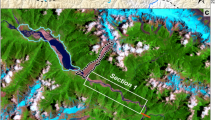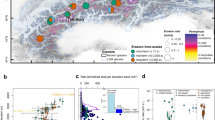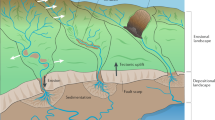Abstract
SIMS1 suggests that instability of substrate resulting from wind and water erosion could be a factor relevant to the existence of the Teesdale rarities, and asks the question, “Have the bare areas been the subject of critical study ?”
This is a preview of subscription content, access via your institution
Access options
Subscribe to this journal
Receive 51 print issues and online access
$199.00 per year
only $3.90 per issue
Buy this article
- Purchase on Springer Link
- Instant access to full article PDF
Prices may be subject to local taxes which are calculated during checkout
Similar content being viewed by others
References
Sims, C., Nature, 222, 986 (1969).
Pigott, C. D., J. Ecol., 44, 545 (1956).
McVean, D. N., and Ratcliffe, D. A., Plant Communities of the Scottish Highlands (HMSO, London, 1962).
Braun-Blanquet, J., Pflanzensoziologie, 865 (Springer Verlag, Vienna, 1964).
Shimwell, D., Mitt fur-soz Arbeitsgem., 14, 309 (1969).
Author information
Authors and Affiliations
Rights and permissions
About this article
Cite this article
BELLAMY, D., BRIDGEWATER, P., JONES, A. et al. Teesdale Rarities. Nature 224, 619–620 (1969). https://doi.org/10.1038/224619a0
Received:
Issue Date:
DOI: https://doi.org/10.1038/224619a0
Comments
By submitting a comment you agree to abide by our Terms and Community Guidelines. If you find something abusive or that does not comply with our terms or guidelines please flag it as inappropriate.



